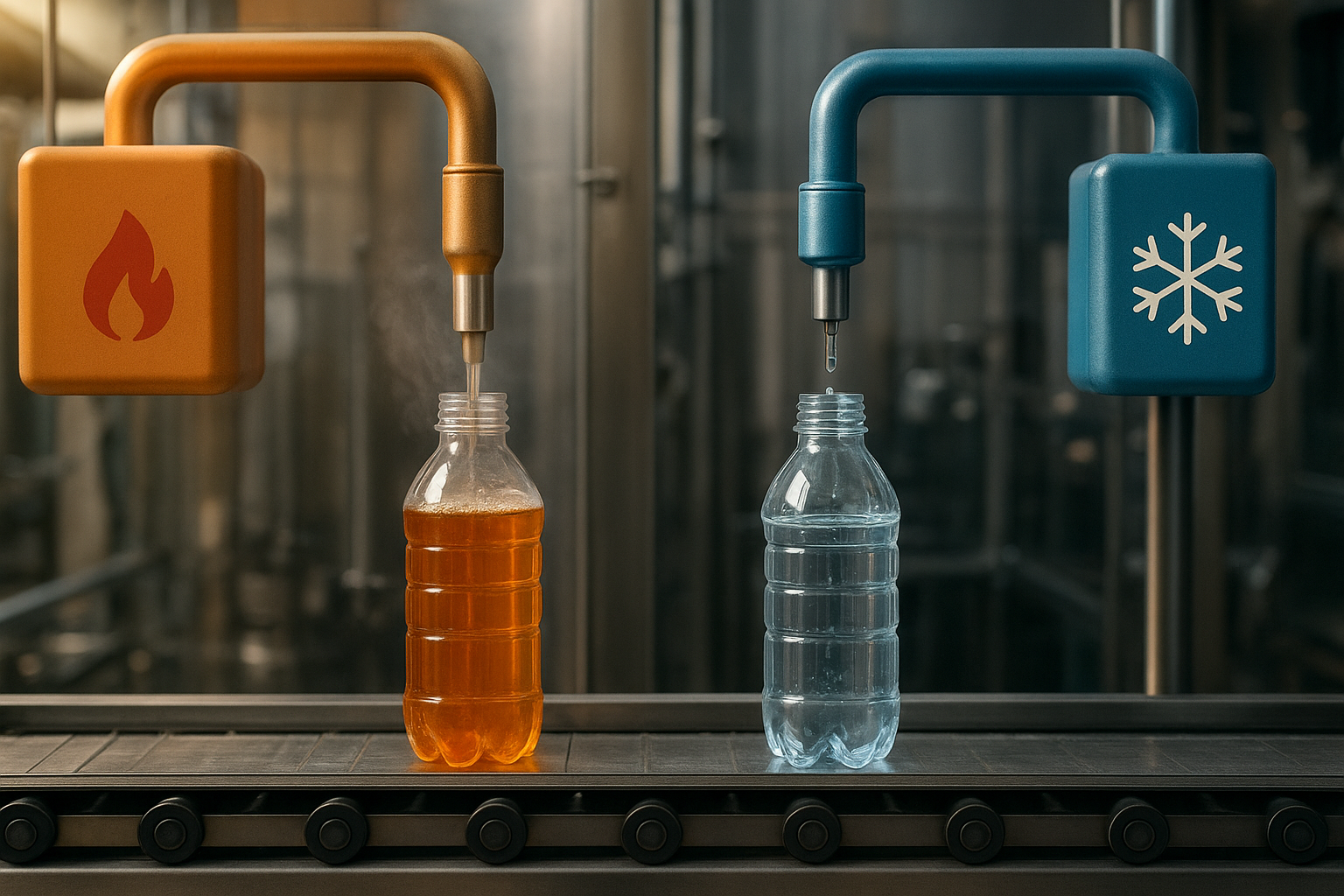In the food and beverage industry, the design of PET bottles plays a crucial role in product safety, freshness, and shelf appeal. Choosing between hot fill and cold fill packaging is one of the most important decisions manufacturers face, as it directly affects the bottle’s design, performance, and cost efficiency.
Each process has its own technical requirements that influence how the PET preform is designed, molded, and tested — ultimately determining the strength, shape, and functionality of the final container
Table of Contents
Key Differences Between Hot Fill and Cold Fill Processes
Hot Fill PET Bottles
-
Designed for beverages filled at high temperatures.
-
Commonly used for juices, nectars, teas, and isotonic drinks.
-
Require a heavier PET preform to resist heat and prevent deformation.
-
Feature vacuum or compensation panels that absorb material shrinkage as the product cools.
Cold Fill PET Bottles
-
Intended for chilled or carbonated beverages such as bottled water, sodas, and energy drinks.
-
Focus on lightweighting to reduce material use and costs.
-
Their strength relies on internal pressure, especially for carbonated products.
Understanding these differences is key to developing cost-effective and sustainable PET packaging solutions that match your product’s requirements.
How Hot Fill vs Cold Fill Affects PET Bottle Design
The choice between Hot Fill and Cold Fill influences three main design factors:
-
Preform weight: Hot fill bottles require a higher gram weight to withstand heat, while cold fill bottles can be lighter.
-
Material distribution: Hot fill containers include reinforced zones to handle thermal stress; cold fill bottles have thinner walls for optimized weight and performance.
-
Bottle shape: Hot fill designs often include vacuum panels to prevent distortion, whereas cold fill bottles focus on sleek, ergonomic shapes for better shelf appeal.
What to Consider When Choosing Between Hot Fill and Cold Fill
Before selecting your PET packaging type, evaluate:
-
Product nature: Is your beverage heat-processed or refrigerated?
-
Logistics: How will temperature changes during transport affect the container?
-
Consumer experience: What design and brand perception do you want to deliver?
For example, a premium juice brand may require a hot fill PET bottle to ensure microbial safety, while a carbonated soft drink depends on cold fill packaging to maintain pressure and carbonation.
Practical Applications in the Beverage Industry
-
Hot Fill: Natural juices, ready-to-drink teas, isotonic beverages.
-
Cold Fill: Bottled water, carbonated drinks, energy drinks.
In both cases, preform weight, bottle design, and material performance vary depending on the product’s temperature and filling conditions.
To learn more, read our article: How Does Preform Weight Affect Bottle Strength?
Conclusion
Knowing the differences between hot fill and cold fill PET packaging empowers beverage manufacturers to make smarter, more sustainable design decisions. The right choice doesn’t just depend on the filling process — it also involves your product type, storage conditions, and target market.
Need expert advice? Contact our team today to request a quote and get personalized guidance on the best PET preform design for your product.

